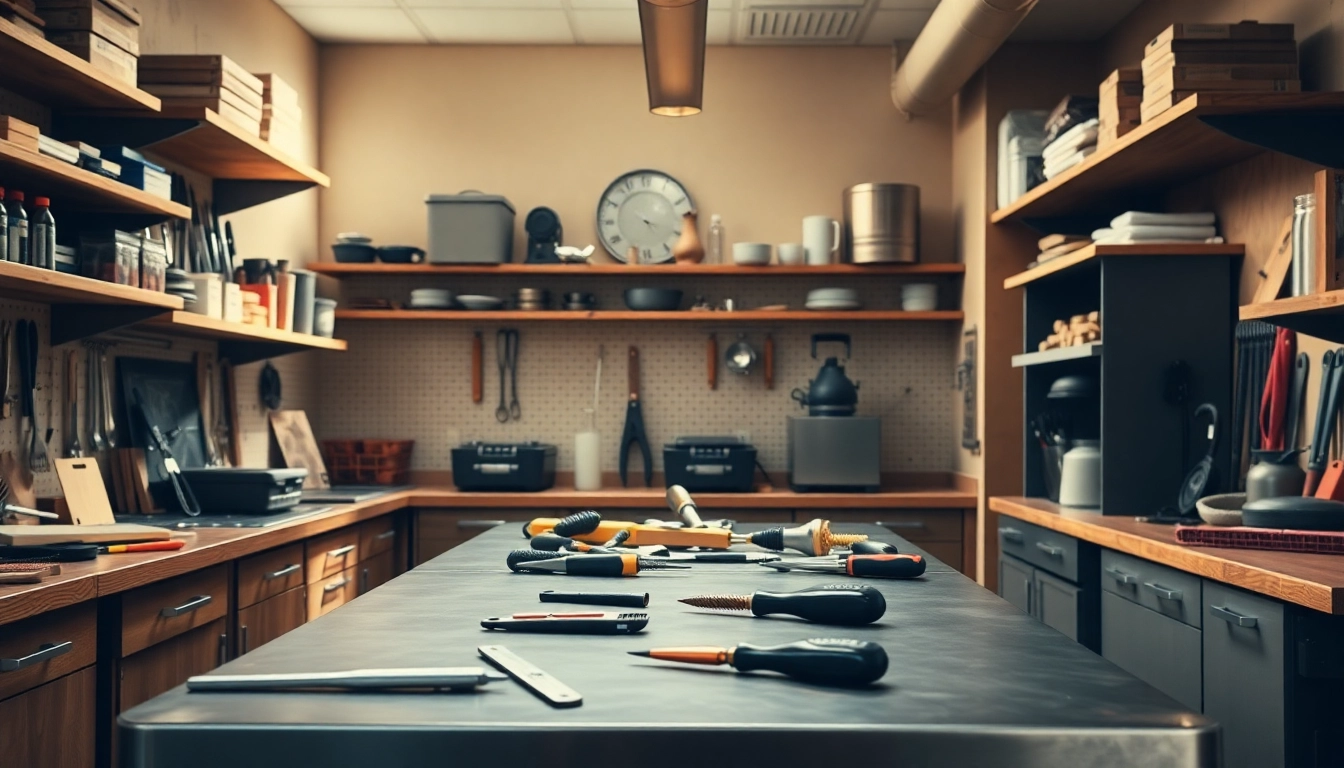Understanding Prep Table Mechanisms
In the world of commercial kitchens, prep tables are invaluable assets that streamline food preparation and enhance workflow. Understanding the intricate mechanisms of these units is essential for effective maintenance and prep table repair. This section delves into the components that make up refrigerated prep tables, the typical failures they encounter, and how temperature influences their performance.
Components of Refrigerated Prep Tables
Refrigerated prep tables are built with a variety of components, each playing a critical role in ensuring function and efficiency. Key components include:
- Compressor: The heart of the refrigeration system, which circulates refrigerant to lower the temperature inside the unit.
- Condenser Coils: They dissipate heat from the refrigerant, allowing it to cool and return to a liquid state.
- Evaporator Coils: Inside the prep table, these coils absorb heat from the interior, thus cooling the food stored within.
- Thermostat: This component regulates the temperature within the prep table, ensuring it remains within the safe range for food storage.
- Door Seals: Properly sealing doors are essential to prevent cold air from escaping and maintaining efficient operation.
Common Mechanical Failures
Despite their robust construction, several mechanical failures can occur over time. The most common issues include:
- Compressor Failure: Often caused by wear and tear or electrical issues, resulting in the unit not cooling properly.
- Thermostat Malfunctions: A faulty thermostat can lead to inconsistent temperatures, causing food safety issues.
- Poor Door Seals: If door seals are worn, warm air may enter the unit, compromising refrigeration efficiency.
- Frost Build-Up: This can occur from excessive moisture inside the unit due to a malfunctioning defrost timer or heater.
How Temperature Affects Performance
The performance of a refrigerated prep table is directly linked to its operating temperature. Ideally, prep tables should maintain a temperature of 32°F to 41°F (0°C to 5°C) to ensure food safety. Regular monitoring is critical to prevent fluctuations that can lead to spoilage and customer dissatisfaction. Understanding how ambient temperature and product load can influence internal temperatures is crucial for kitchen managers.
Identifying Problems with Prep Tables
Recognizing the signs of malfunction early can significantly extend the lifespan of prep tables. Identifying issues before they escalate can mean the difference between a simple repair and a costly machinery failure.
Signs of Malfunction to Look For
There are various signs that indicate a prep table might need repairs. Some of the most common indicators include:
- Temperature Inconsistencies: Fluctuating temperatures are a primary sign that something is wrong, often linked to thermostat issues.
- Unusual Noises: Sounds such as banging or hissing could indicate compressor problems or refrigerant leaks.
- Frost Accumulation: Excessive frost buildup often points to improper defrost cycle operations.
- Leaks: Any pooling of water around the unit should be investigated immediately as it can lead to electrical hazards.
Regular Maintenance Checks
Integrating regular maintenance checks into the daily operations of your kitchen can significantly prevent issues. Essential maintenance tasks include:
- Cleaning Condenser Coils: Dirt and debris can accumulate on condenser coils, impeding their ability to dissipate heat effectively.
- Checking Door Seals: Ensure that door seals are intact, prevent cold air from escaping, and that the doors function properly.
- Testing the Thermostat: Regularly test the thermostat for accuracy to maintain consistent temperatures.
- Inspecting Electrical Connections: Check for frayed wires and loose connections to ensure electrical safety.
Diagnostic Tools Every Chef Should Have
Investing in proper diagnostic tools is critical for any kitchen environment. Useful tools include:
- Infrared Thermometer: Useful for quickly checking surface temperatures without opening the unit.
- Digital Multimeter: Essential for testing electrical components and ensuring voltage levels are appropriate.
- Leak Detection Kit: Important for identifying refrigerant leaks that could affect the cooling system.
- Mechanical Manifold Gauge: This tool enables technicians to check the refrigerant levels inside the system.
Step-by-Step Guide to Prep Table Repair
Repairing a prep table requires methodical planning and execution. Follow these steps for effective repairs, whether you opt for DIY methods or hire professionals.
Preparing for a Repair Session
Preparation is the key to successful repairs. Begin by outlining the specific issues facing the prep table and gathering necessary tools. Create a clean workspace and ensure the unit is unplugged before starting any repairs. Consider safety precautions, such as wearing gloves and goggles to protect against possible hazards.
Common Repairs: DIY vs. Professional
While some issues can be easily managed through DIY methods, others may warrant professional attention. For instance:
- DIY: Replacing door seals, cleaning condenser coils, and adjusting thermostats are often manageable for experienced kitchen staff.
- Professional: Compressor replacements, refrigerant charging, and complex wiring issues should be handled by certified technicians to ensure safety and compliance with local regulations.
Safety Precautions During Repairs
Prioritizing safety is essential during any repair work. Follow these precautions:
- Always disconnect power to the unit before conducting any repairs.
- Use appropriate tools to avoid damaging components.
- Wear personal protective equipment (PPE), especially when handling sharp or electrical components.
- Follow the manufacturer’s guidelines closely to avoid warranty voids.
Preventive Maintenance for Longevity
To maximize the lifespan of your prep tables, implement a preventive maintenance strategy. This includes structured cleaning and routine inspections that can help identify issues before they require costly repairs.
Daily Cleaning Routines
Daily cleaning not only promotes hygiene but also prevents deterioration of components. Establish a daily cleaning checklist that addresses:
- Wiping down surfaces with appropriate sanitizing solutions to avoid bacterial build-up.
- Removing food particles from storage areas to prevent cross-contamination.
- Inspecting evidence of mold or mildew.
- Cleaning all exterior surfaces, including door handles, to improve longevity and appearance.
Weekly and Monthly Maintenance Tasks
In addition to daily routines, dedicate time each week and month for more in-depth maintenance practices, such as:
- Weekly: Check and clean fan blades and inspect drip trays for blockages.
- Monthly: Test electrical components and inspect the refrigerant system for leaks.
Evaluating Efficiency to Prevent Failures
Regular evaluation of prep table performance is critical. Keep an eye on:
- Energy consumption trends to identify potential inefficiencies.
- Tracking temperature history to gauge performance over time.
- Documenting maintenance history to assist future troubleshooting.
Choosing Professional Repair Services
Sometimes, repairs can necessitate a call for professional help. Understanding when to seek assistance is key to preventing larger issues down the line.
When to Call a Professional for Prep Table Repair
Consider calling a professional when encountering:
- Complicated electrical issues beyond basic troubleshooting capabilities.
- Refrigeration failures that require specialized knowledge of refrigerant types and handling.
- Repeated cycling of the compressor indicating deeper systemic issues.
Assessing Service Providers: Key Questions
When selecting a service provider, it’s important to ask the following questions:
- What certifications do you hold? – Look for licenses that validate their expertise.
- Do you provide estimates before the work begins? – This protects you from surprise costs.
- What’s your warranty policy on repairs? – Knowing this can save you potential costs if issues reoccur.
- How soon can you schedule service? – Fast service may be crucial in a high-demand kitchen situation.
Understanding Repair Costs and Estimates
Repair costs can vary based on the extent of the issue and geographical location. Some factors to consider include labor fees, parts prices, and the complexity of the repair. On average, basic repairs might range from $100 to $300, while major repairs can escalate to $1,000 or more.



